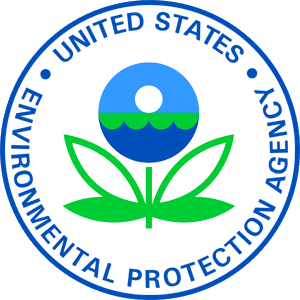Biden-Harris Administration Takes Latest Action Under Toxic Substances Control Act to Protect Public from Exposure to Harmful Chemicals
EPA proposes to begin evaluations on five harmful chemicals, advancing the Biden-Harris Administration’s efforts to deliver environmental justice, end cancer as we know it
WASHINGTON – Today, July 24, the U.S. Environmental Protection Agency proposed to designate five chemicals as High-Priority Substances for risk evaluation under the nation’s chemical safety law, the Toxic Substances Control Act (TSCA). If EPA finalizes these designations as proposed, the agency would immediately move forward with the risk evaluation process. This step is consistent with a commitment from the Biden-Harris Administration to understand and address environmental and toxic exposures to ensure that every community has access to clean air and water, supports the Cancer Moonshot’s mission to end cancer as we know it, and bolsters the Administration’s efforts to make progress on delivering environmental justice and tackling plastic pollution.
The five chemical substances EPA is proposing to designate as High-Priority Substances are:
- Vinyl Chloride (CASRN 75-01-4),
- Acetaldehyde (CASRN 75-07-0),
- Acrylonitrile (CASRN 107-13-1),
- Benzenamine (CASRN 62-53-3), and
- 4,4’-methylene bis(2-chloroaniline) (MBOCA) (CASRN 101-14-4).
“The Biden-Harris Administration continues to make significant progress in protecting workers and communities from exposure to harmful chemicals as we implement the 2016 TSCA amendments that strengthened EPA’s authority on chemical safety, ” said Assistant Administrator for the Office of Chemical Safety and Pollution Prevention Michal Freedhoff. “Studying the safety of these harmful chemicals – all five of which have been linked to cancer and are used to make plastic – would help lead to critical public health and environmental protections in communities across the country and would ensure that the public has access to more data on these chemicals sooner.”
Chemicals Proposed as High-Priority Substances for Risk Evaluation
All five chemicals were selected from the 2014 TSCA Work Plan, which is a list of chemicals identified by EPA for further assessment based on their hazards and potential for exposure. In proposing these five chemical substances as High-Priority Substances for risk evaluation, EPA had to consider the chemicals’ conditions of use and production volume or changes in conditions of use and production volume over time, impacts to potentially exposed or susceptible subpopulations including children and workers, and the chemicals’ potential hazards and exposures. EPA also considered more specific criteria such as the chemical’s bioaccumulation and environmental persistence and whether the chemical is stored near significant sources of drinking water.
Vinyl chloride is used primarily in the manufacturing and processing of plastic materials such as polyvinyl chloride (PVC), plastic resins, and other chemicals. Many of these materials are used for pipes and insulating materials. This chemical was also involved in the Norfolk Southern train derailment in East Palestine, Ohio. Vinyl chloride is a known human carcinogen and can cause liver, brain, and lung cancer in exposed workers. Short-term exposure to vinyl chloride can also result in other health effects such as dizziness, nausea, and eye and skin irritation. Vinyl chloride exposure can also damage genetic material in cells, which can lead to numerous adverse health effects. In the 1970s, the White House Council on Environmental Quality and EPA officials raised serious concerns about the health impacts of vinyl chloride as an example when the Nixon Administration asked Congress to write a law to ensure chemicals were made and used safely, which led to passage of the “original” TSCA in 1976.
Acetaldehyde is used primarily in the manufacturing and processing of adhesives, petrochemicals, plastic and other chemicals, as well as intermediates for products such as packaging and construction materials. Acetaldehyde is a probable human carcinogen. Specifically, animal studies have shown that exposure to acetaldehyde can result in the formation of nasal and laryngeal tumors. Short-term exposure can also result in health effects such as irritation of the respiratory system and reduced heart function. Data further shows that acetaldehyde exposure can damage genetic material in cells, potentially leading to numerous adverse health effects.
Acrylonitrile is used primarily in the manufacturing and processing of plastic materials, paints, petrochemicals, and other chemicals. Acrylonitrile is a probable human carcinogen and can cause lung and brain cancer in exposed workers. Short-term exposure to acrylonitrile can also result in health effects such as eye, skin, and respiratory irritation. Long-term exposure can result in reproductive effects such as reduced sperm count and developmental effects such as slowed fetal growth.
Benzenamine is used in the manufacturing and processing of dyes and pigments, petrochemicals, plastics, resins, and other chemicals. Benzenamine is a probable human carcinogen and can cause bladder tumors and pancreatic cancer in workers. Long-term exposure to benzenamine can result in a range of adverse health effects such as difficulty in breathing, tumor growth in the spleen, and possible reductions in fetal viability.
MBOCA is used in the manufacturing and processing of rubbers, plastics, resins, and other chemicals. MBOCA is a probable human carcinogen. Specifically, animal studies have shown that exposure to MBOCA can cause liver and urinary bladder cancer. Short-term exposure to MBOCA can result in eye and skin irritation. Data further demonstrates that MBOCA exposure can damage genetic material in cells, potentially leading to numerous adverse health effects.
Prioritization Process and Improvements
Prioritization is the first step under EPA’s authority to regulate existing chemicals currently on the market and in use. EPA’s proposed designations are not themselves a finding of risk. If EPA finalizes these designations, the agency will initiate risk evaluations for these chemicals to determine whether they present an unreasonable risk to human health or the environment under the TSCA conditions of use (the way the chemical is made and used), which the agency is required to complete within 3-3.5 years. If at the end of the risk evaluation process EPA determines that a chemical presents an unreasonable risk to health or the environment, the agency must begin the risk management process to take action to eliminate these unreasonable risks.
EPA began the process of prioritizing these five chemicals in December 2023 and also announced that it expects to initiate prioritization on five chemicals every year, which will create a sustainable and effective pace for risk evaluations. Over the past year, EPA has continued to improve the prioritization process by investing in cutting-edge software to review more information earlier in prioritization. EPA has also implemented improvements to its systematic review approaches as recommended by the Scientific Advisory Committee on Chemicals (SACC) by incorporating additional data sources such as assessments published by other government agencies to identify potential hazards and exposures, clarifying terminology to increase transparency in the systematic review process, and presenting interactive literature inventory trees and evidence maps to better depict data sources containing potentially relevant information.
EPA has conducted a preliminary screening and technical review of large data sets to more efficiently identify relevant information for prioritization and risk evaluation and can easily flag information that may be useful to retrieve later in the risk evaluation process. As a result, EPA now has a head start on risk evaluations. At this proposed designation stage, EPA has a much fuller understanding of how these chemicals behave in the environment and their potential hazards and exposures than it had at this point in the process in the previous prioritization cycle conducted in 2019. That has also enabled EPA to make considerably more information available to the public a year earlier than occurred for the first 30 chemicals designated for risk evaluation under TSCA. The public will be able to see which studies and what information EPA considered in its screening review for proposed designation and submit any additional information they would like EPA to consider via public comment.
EPA will accept public comments on the proposed designations for 90 days after publication via docket EPA-HQ-OPPT-2023-0601 at the Regulations.gov page. Upon publication of the Federal Register notice, supporting documents will also be available in the docket.
Learn more about the prioritization process under TSCA.
NOTE: This press release was submitted to Urban Milwaukee and was not written by an Urban Milwaukee writer. While it is believed to be reliable, Urban Milwaukee does not guarantee its accuracy or completeness.
Mentioned in This Press Release
Recent Press Releases by U.S. Environmental Protection Agency
EPA Announces $3 Billion in New Funding for States to Reduce Lead in Drinking Water
Nov 25th, 2025 by U.S. Environmental Protection AgencyAdditionally, $1.1 Billion of Unused Funding Redistributed for States
EPA Releases Draft Health-Based Recommendations for PFAS Levels in Bodies of Water
Dec 19th, 2024 by U.S. Environmental Protection AgencyCriteria can be used to inform water quality standards to protect people from exposure to PFAS






















